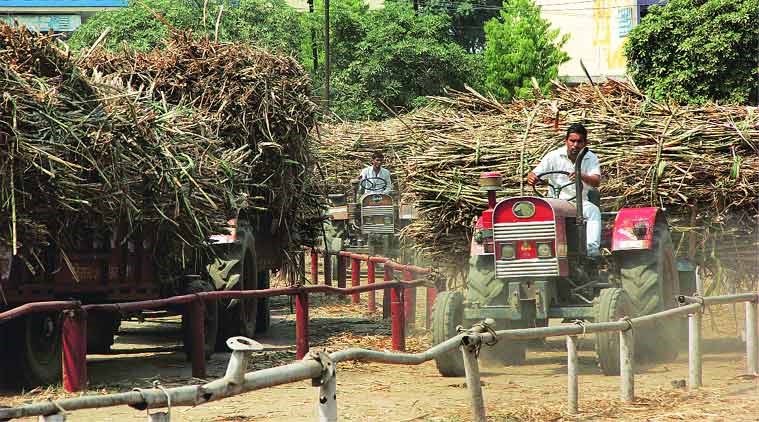By: Sarasvati Spaur

Titled, “After RBI, NABARD says loan waivers a bad idea,” this article in the Economic Times – Times of India discusses the farm loan waivers recently put into effect by the central Indian state of Uttar Pradesh (UP), and criticism of the program by India’s National Bank for Agriculture and Rural Development (NABARD). The scheme provides 36,000-crore in debt waivers to farmers in UP. NABARD Chairman Bhanwala argues that the loan waivers would create moral hazard at the taxpayers’ expense. Already, the outstanding amount borrowed by NABARD is set to increase by 15,000-crore in 2018 (PTI 2017). Instead of facilitating the widespread distribution of “bad loans,” as Bhanwala asserts this scheme has the potential to do, he argues that loan waivers should be targeted only to farmers most in need. In working toward the preexisting goal of doubling the incomes of all farmers in UP within five years, NABARD emphasizes prioritizing long-term loans and project-specific allocation of funds as a better way to improve farmer welfare over loan waiver programs.
Building the Model
As this article relates to several complex economic concepts, it appears prudent to review their meanings in the context of development economics in general and credit markets in particular, as defined by Schaffner (2014). At its simplest, credit markets comprise of lenders and borrowers. In a competitive market, we assume the lender agrees to lend if he can charge at least as much as his opportunity cost of providing the loan. We also assume that a borrower will choose to borrow if the expected returns to capital are at least as much as the cost.
Two aspects introduced to the model are uncertainty and asymmetric information. It is intuitively more realistic to assume that these constraints are present, than to suppose otherwise. Yet such concepts can lead to market failure. Briefly, market failure stemming from the inability of a lender to know the borrower’s investment choice comprises ex-ante moral hazard. In other words, there exists an incentive for individuals to undertake a risky project over a safe project. For ex-post moral hazard, the lender cannot see if the project was successful—so that there exists an incentive for the borrower to lie and avoid repayment.
The lender in this case comprises the government, and the borrowers are the farmers. In our model, we generally assume that if the borrower’s project fails, their expected returns are 0 (but they do not go into any debt beyond that). With this loan waiver, it appears that any outstanding debt from a project is waived.
Mapping theoretical expectations onto our empirical model, we would expect the waiver permits farmers an accounting profit of 0 if the project failed, and a profit of greater than the profit of succeeding and telling the truth if the farmer lies but the project succeeded—facilitating an incentive to lie. Recall that the model of credit markets is sensitive to differences in wealth. Needy farmers—as mentioned in the article—may have a wealth level close to 0. Without collateral, and under asymmetric information and ex-post moral hazard, we may expect many lenders to be unwilling to lend to poor borrowers. A loan waiver may allow such farmers to invest in the first place.
Relating the Model to Posited Predictions

I now look at whether NABARD’s argument reasonably predicts farmer behavior based on our model. It is important to first note that the article does not provide much background on preexisting policies, or if the ability to repay constituted a large problem for farmers.
Recall that Bhanwala suggests that farmers who take the loan are likely to say they fail and require a “bail out” by taxpayers. It appears plausible that the debt waiver could increase ex-ante moral hazard, as insurance against failure can motivate individuals to choose a risky project with greater returns (if it succeeds) over a safe project—one with a guaranteed return. If this occurs across the affected farmers, then the expected return for the lender is lower, and the government and taxpayers may have to pay more to subsidize the losses. This matches Bhanwala’s prediction, as mentioned above.
I now look at predictions on the effect of the loan waiver on ex-post moral hazard. Bhanwala cites the disadvantages the scheme posed from a moral hazard and credit repayment perspective, suggesting that comprehensive monitoring is infeasible. Given that the lender cannot observe if the project fails or succeeds, and assuming there is no ability to monitor project outcomes, the farmer would likely keep their returns and not repay the credit loaned to him if he succeeded. Thus, the model predictions seem consistent with Bhanwala’s predictions.
Additionally, Bhanwala’s opinion does not appear inconsistent with the model’s predictions on the inability of very poor farmers to borrow, or the value that a loan waiver could provide to them. This may be conservatively inferred from the fact that Bhanwala explicitly did not disagree with providing such waivers to needy farmers (PTI 2017).
Conclusion
Bhanwala’s comments generally describe borrower behavior as predicted by the model. Yet there appear benefits to providing the waiver that Bhanwala did not discuss. For example, it can allow impoverished farmers to enter the credit market and invest, who may not have borrowed formally otherwise. In The World Bank Research Observer, Besley (1994) asserts that providing security to borrowers (such as through a waiver) is important for building local savings in rural credit markets. Even if this is not profit-maximizing, it seems desirable from a social welfare standpoint. Additionally, farmers may be very risk averse, such that loan waivers provide the insurance necessary to induce borrowing. In that case, we regard it as socially optimal that they chose to invest and not pursue an alternate use of their time and capital.
I have written this blog post assuming that the theory explains what we observe in real life. In actuality, there may not be a clear distinction between a safe and risky project, the riskiness may be unknown, and both projects may not be available throughout UP or to each farmer. It remains to be observed if and how farmers change their behavior as a result of this policy change, and the extent to which our theoretical predictions map onto empirical reality.
Works Cited
Besley, T. (1994). How do market failures justify interventions in rural credit markets? World Bank Research Observer, 9(1), 27-27.
Indian Express [Photograph]. (2015). Retrieved from http://images.indianexpress.com/2015/04/village1.jpg
PTI [Photograph]. (2017). Retrieved from http://www.livemint.com/rf/Image621x414/LiveMint/Period2/2017/04/12/Photos/Processed/bhanwala3-kYeH–621×414@LiveMint.jpg
PTI. (2017). After RBI, NABARD says loan waivers a bad idea. The Economic Times. Retrieved from http://economictimes.indiatimes.com/news/economy/agriculture/after-rbi- NABARD-says-loan-waivers-a-bad-idea/articleshow/58130117.com
Schaffner, Julie. (2014). Investment and Financial Markets. In Development Economics: Theory, Empirical Research, and Policy Analysis. Wiley.
Overall, this is a really good piece and very informative on an interesting policy I’m sure not a lot of us knew about. Despite reservations about creating a moral hazard problem, I think you did a great job of highlighting a benefit here that poorer farmers can stand to gain a lot from this through gaining access to loans. The study that I read drew a conclusion that related small/inefficient output of rural farmers to limited access to loans and land markets. This article is relatable and I think the benefits seen by poor farmers gaining the ability to invest more will outweigh and moral hazard issues faced.
LikeLike
I thought this post was very well written, especially in regard to explaining the models we learned in class in a simple manner.
It seems that Bhanwala is highlighting one of the negative aspects of this program by explaining how those with bad loans can just expect to be bailed out if their projects fail. However, do you know more of any positive effects of these waivers? Also, What was the motivation for these waivers in the first place? (When I clicked on the link at the end it brought me to an error page, so I apologize if these questions are answered in the article)
– Nafee Ahmed
LikeLike